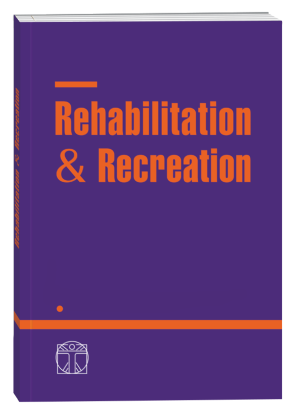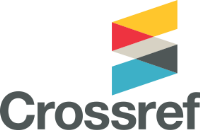CLUSTERING OF FITNESS SERVICE CONSUMERS IN CHINA
DOI:
https://doi.org/10.32782/2522-1795.2024.18.4.9Keywords:
physical activity, health, clustering, segment, fitness services, consumer preferences, China, active lifestyleAbstract
Purpose was to identify and describe the main groups of fitness service consumers based on their preferences, motivations, and behaviors to optimize marketing strategies that address the needs of different consumer segments. Materials and methods. The study involved 257 respondents (136 men and 121 women) in early adulthood, with an average age of 29.4 (+5.6/-8.4), from various provinces of China. The following scientific methods were used: theoretical analysis and synthesis of scientific-methodological literature and leading practical experience; sociological research methods; and methods of mathematical statistics (analysis of variance, cluster analysis). Results. Preferred types of health fitness among fitness service consumers in China, their motivations for participation, and external and internal factors limiting engagement in wellness programs were identified. To better understand the relationships between different components of consumer preferences and satisfaction, hierarchical cluster analysis was used to classify respondents. The optimal number of clusters was determined using the elbow method ("scree plot") and silhouette method, both indicating two clusters. The first cluster consisted of 111 respondents, and the second included 140. The total number of observations (251) was slightly lower than the total number of completed surveys (257) due to the exclusion of records with missing data. Variables related to motivation, fitness effectiveness, and barriers to participation had a strong impact on clustering. In contrast, there were no significant differences between clusters in demographic factors and self-assessed physical activity levels. Conclusion. The results indicate significant differences between clusters in the indicators that primarily reflect respondents' attitudes towards participation in health fitness. These differences are largely explained by the psychological characteristics of the respondents and their perceptions of health fitness activities.
References
1. Aнікєєв Д.М., Ши Шицзє. Особливості формування маркетингових стратегій розвитку підприємств на ринку фітнес-послуг Китаю. Теорія і методика фізичного виховання і спорту. 2023. № 2. С. 37–40. https://doi.org/10.32652/tmfvs.2023.2.37-40
2. Ao L, Bansal R, Pruthi N, Khaskheli MB. Impact of Social Media Influencers on Customer Engagement and Purchase Intention: A Meta-Analysis. Sustainability. 2023. № 15(3). P. 2744. https://doi.org/10.3390/su15032744
3. Chen B. Research on the application of marketing strategy of national fitness exercise and dance events in the construction of sports culture based on big data technology. Applied Mathematics and Nonlinear Sciences. Sciendo, 2024. № 9(1). https://doi.org/10.2478/amns.2023.1.00077
4. Chen, Y. Customer segmentation of fitness and leisure industry based on RFMD model and cluster analysis. E-Commerce Letters. 2021. № 10(2). P. 25–36. https://doi.org/10.12677/ECL.2021.102004
5. Dhiman N., Arora N., Dogra N., Gupta A. (2020). Consumer adoption of smartphone fitness apps: an extended UTAUT2 perspective. Journal of Indian Business Research. 2019. Vol. 12, № 3. P. 363–388. https://doi.org/10.1108/JIBR-05-2018-0158
6. Huang Y, Kim D. How Does Service Quality Improve Consumer Loyalty in Sports Fitness Centers? The Moderating Role of Sport Involvement. Sustainability. 2023; № 15(17). P. 12840. https://doi.org/10.3390/su151712840
7. Li Zhihui (Linda), Yixing (Lisa) Gao. Better Wealth, Better Health: Wellness Hotel Attributes and Consumer Preferences in China. Journal of China Tourism Research. 2019. Vol.
12. № 3. P. 363–388. https://doi.org/10.1080/19388160.2023.2194698
8. Liu Qing, Hao Wan, Hongfang Yu. Application and Influence of Big data Analysis in Marketing Strategy. Frontiers in Business, Economics and Management. 2023. №9. P. 168-171. https://doi.org/10.54097/fbem.v9i3.9580
9. Na Wang, Sazrinee Zainal Abidin, Nazlina Shaari, Noranita Mansor. Influence of Chinese cultural values on consumer decision-making: A PRISMA-based systematic review. International Journal of advanced and applied sciences. 2024. №1. P. 78-86. https://doi.org/10.21833/ijaas.2024.01.009
10. Paschalidou K., Tsitskari E., Alexandris K., Karagiorgos T., Filippou D. Segmenting Fitness Center Customers: Leveraging Perceived Ethicality for Enhanced Loyalty, Trust, and Wordof-Mouth Communication. Sustainability. 2023. №15(22), P. 16131. https://doi.org/10.3390/su152216131
11. R Core Team. R: A Language and Environment for Statistical Computing. R Foundation for Statistical Computing. 2023. Vienna, Austria. https://www.R-project.org/
12. Tsitskari E., Tzetzis G., Konsoulas D. Perceived Service Quality and Loyalty of Fitness Centers’ Customers: Segmenting Members Through Their Exercise Motives. Services Marketing Quarterly. 2017. № 38(4). P. 253–268. https://doi.org/10.1080/15332969.2017.1366211
13. Voráček J., Čáslavová E., Šíma J. Segmentation in sport services: A typology of fitness customers. Acta Universitatis Carolinae. Kinanthropologic. 2016. № 51(2). P. 32–47. https://doi.org/10.14712/23366052.2015.30
14. Ward J.H., Jr. Hierarchical grouping to optimize an objective function. Journal of the American Statistical Association. 1963. №58(301). P. 236–244. https://doi.org/10.1080/01621459.1963.10500845
15. Wu C., Chen Y.-C., Umstattd Meyer M.R. 2020. A moderated mediation model of emotional labor and service performance: Examining the role of work–family interface and physically active leisure. Human Performance. 2020. № 33(1). P. 34–51. https://doi.org/10.1080/08959285.2019.1695802
Downloads
Published
How to Cite
Issue
Section
License

This work is licensed under a Creative Commons Attribution-NonCommercial-NoDerivatives 4.0 International License.












